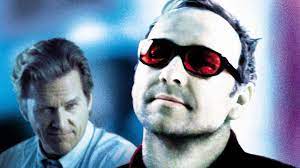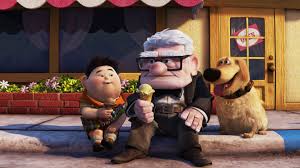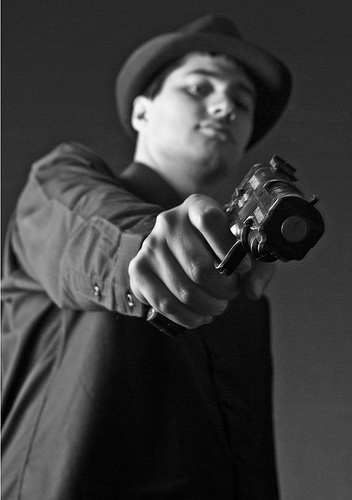Dynamic vs Static Characters – Your Fiction Needs Them Both
Great fiction features great characters—there should be no argument there. While plot is crucial (as is having a terrific premise), for any story to be both memorable and engaging, it must have fresh, compelling characters. What we’re going to examine in this post are dynamic vs static characters, which should help you add insights to your writer’s toolbox.
You’ve no doubt heard about character arcs—a gradual change readers follow from start to end that shows how the events in a story impact the character so that by the end of the story they’ve grown in some way or learned important things about self and/or the world.
But not every character needs to change (but many should and can). Some characters are called “static,” while others, who manifest those “arcs, are “dynamic.” A static character remains unaltered throughout the story, while dynamic characters undergo significant internal or external transformations.
The key to determining whether a character should be one or the other lies not in whether they change but in how well they are crafted to contribute to the narrative’s balance and intrigue.
A static character remains unchanged throughout the story, steadfast in their personality and outlook. This archetype, often misunderstood as dull, serves essential purposes like advancing the plot or acting as a foil to dynamic protagonists. On the flip side, dynamic characters undergo significant internal changes, evolving through a character arc that adds depth and resonance to the narrative.
What Are Static Characters?
Deciding whether a character should be static or dynamic hinges on whether the focus is on the character’s internal or external journey they embark upon. Not every character needs to undergo a profound change; sometimes, the story is about the world they inhabit rather than their personal evolution. Sometimes a static character is pivotal and acts as a catalyst.
Two great examples of “catalyst” characters are Mary Poppins and Prot in K-Pax (one of my all-time favorite films).
Mary Poppins, as she declares, is “practically perfect in every way.” She doesn’t change in the story but because of who she is, she effects change in all those around her. Her presence in the Banks’ home helps Mr. Banks, the overly busy and neglectful father, to realize how much he loves and needs to spend time with his children. (Interestingly, this has a lot of similarities in theme to another famous film Julie Andrews starred in: The Sound of Music.)

Prot, who claims he is an alien from the planet K-Pax, lands in Dr. Mark Powell’s mental ward in New York City. It doesn’t take long to see that Prot is on a mission to change Powell’s life, and, in the process, he changes the life of everyone—for the better—in the psych ward.
So, being a static character is not a bad thing. In fact, static characters, who are often in supporting roles (such as Fermín Romero de Torres in The Shadow of the Wind, a homeless man who comes to work in Daniel’s father’s bookstore), are essential to a believable story.
While these two characters—Mary Poppins and Prot—are main characters, the stories are not really about them. Yet they are pivotal to the plot.
Thus it’s clear: static characters, though unchanging, need not be flat or uninteresting. Their role is distinct—to maintain consistency amid the storm of plot twists. They can be well-developed, possess unique personalities, and add nuance to the story. Other examples include Alice in Alice’s Adventures in Wonderland, James Bond, Scar from The Lion King, and Sherlock Holmes.
It’s very common in certain mystery genres to find static characters, such as those in Agatha Christie’s books (Hercule Poirot and Miss Marple never change). Cozy mystery protagonists (sleuths) are usually static, as the stories center on solving a crime rather than how they might change because of the events that occur.
What Are Dynamic Characters?
Dynamic characters are the ones we see most in fiction. Any character-driven story is going to feature a dynamic character who undergoes change as the plot unfolds. Readers love to go through the emotional transformations of characters, and so they are usually going to have the lead roles.
This transformation (character arc) is not merely a result of external circumstances but is tied to the character’s growth or decline as a person. Dynamic characters can be found in protagonists, antagonists, and even those with minor roles (examples: Scout Finch from To Kill a Mockingbird, Ebenezer Scrooge in A Christmas Carol, Neville Longbottom from the “Harry Potter” series, and Anakin Skywalker in Star Wars).
Balancing static and dynamic characters is akin to orchestrating a symphony of narrative elements. While not every character needs to evolve, the role each plays in the story is pivotal. The interplay between static and dynamic characters adds layers of richness and believability to the storytelling.
Importance of Character Development
The heart of character development lies in authenticity and relevance. Both static and dynamic characters require thoughtful crafting to ensure they resonate with readers. Secondary characters, even if static, should contribute meaningfully to the plot, remaining true to themselves. Whether a hero undergoes transformation or remains steadfast, their backstory, motivations, and unique traits contribute to a well-rounded and captivating narrative.
If your characters are too static, consider tweaking them in the following ways:
- Make Them Rounded: Even if a character remains static, endow them with a distinct personality, backstory, and authenticity.
- Give Them a Foil: Introduce a contrasting character to highlight the static character’s attributes, adding depth and entertainment.
- Focus on the Adventure: If a character is static, ensure that the plot itself carries the intrigue, offering readers a captivating journey even if the character remains unchanged.
If your characters aren’t dynamic enough, try these:
- Give Them a Problem to Solve: Dynamic characters thrive on challenges. Present them with problems that force internal or external changes, driving their character arc.
- Make It Difficult for Them: Challenge dynamic characters with obstacles that test their traits, fostering growth as they confront and overcome difficulties.
- Be Original: Whether static or dynamic, every character should be a unique and rounded individual. Infuse quirks, tics, and distinct traits to differentiate them within the narrative.
For each character, whether static or dynamic, be sure they’re well-rounded and not flat. While you will have incidental characters with very little “screen time” that don’t need to be developed, all your major and secondary characters need depth.
Round characters possess layered characteristics, and relatable flaws, irrespective of whether they are static or dynamic. Flat characters, on the other hand, lack this depth, often serving as one-dimensional entities. Authors must strike a balance, ensuring all static characters have compelling backstories, goals, and relatable flaws, even if few of those details are fleshed out fully in your story.
Clash of Dynamic vs Static Characters
Often a static character will clash with a dynamic one. Just think about real life relationships and the strain that develops when one person wants “things” to stay the same and the other wants to initiate changes. That’s probably a key reason marriages fail.

Some people detest change; others thrive in it. Pitting one of each type in your story will add that important tension and conflict readers crave. There are so many situations you can create that can stretch the bonds of your characters that demand they adjust to change. A great, fun example is the movie Up, in which Russell, the young Boy Scout (static) goes along with old widower Carl to get to Paradise Falls, his lifelong dream. Carl resists change on every level, but by the end of the movie he’s a new man (with a new pet, Dug Dog).

Some stories have the two primary characters both dynamically change but in different ways. In the brilliant movie The Accidental Tourist, Macon Leary hates change. A travel writer, he visits foreign lands but always seeks out places like McDonald’s to eat, helping readers of his tour articles to feel like they are still safe at home in the US. He and his estranged ex-wife Sarah lost a child, and because of the tragedy they’d broken up. Macon encounters a wildly eccentric woman (dog walker) named Muriel and is persuaded by her to engage in a relationship with her. Still, Macon just can’t seem to change. Muriel is a static character, flamboyant and clear what she wants, but Macon eventually musters the courage to make a significant change in his life and perspective, which promises to pull him out of the deep grief he’s buried under.
Take the time to consider your entire cast of characters to determine which characters should be static and which are best as dynamic. If you struggle with coming up with great characters that are perfect for your story, take my online video class: Your Cast of Characters. It will teach you everything you need to know to write a great story with just the right characters!s—there should be no argument there. While plot is crucial (as is having a terrific premise), for any story to be both memorable and engaging, it must have fresh, compelling characters.
Feature Photo by Ahmed Zayan on Unsplash












One Comment